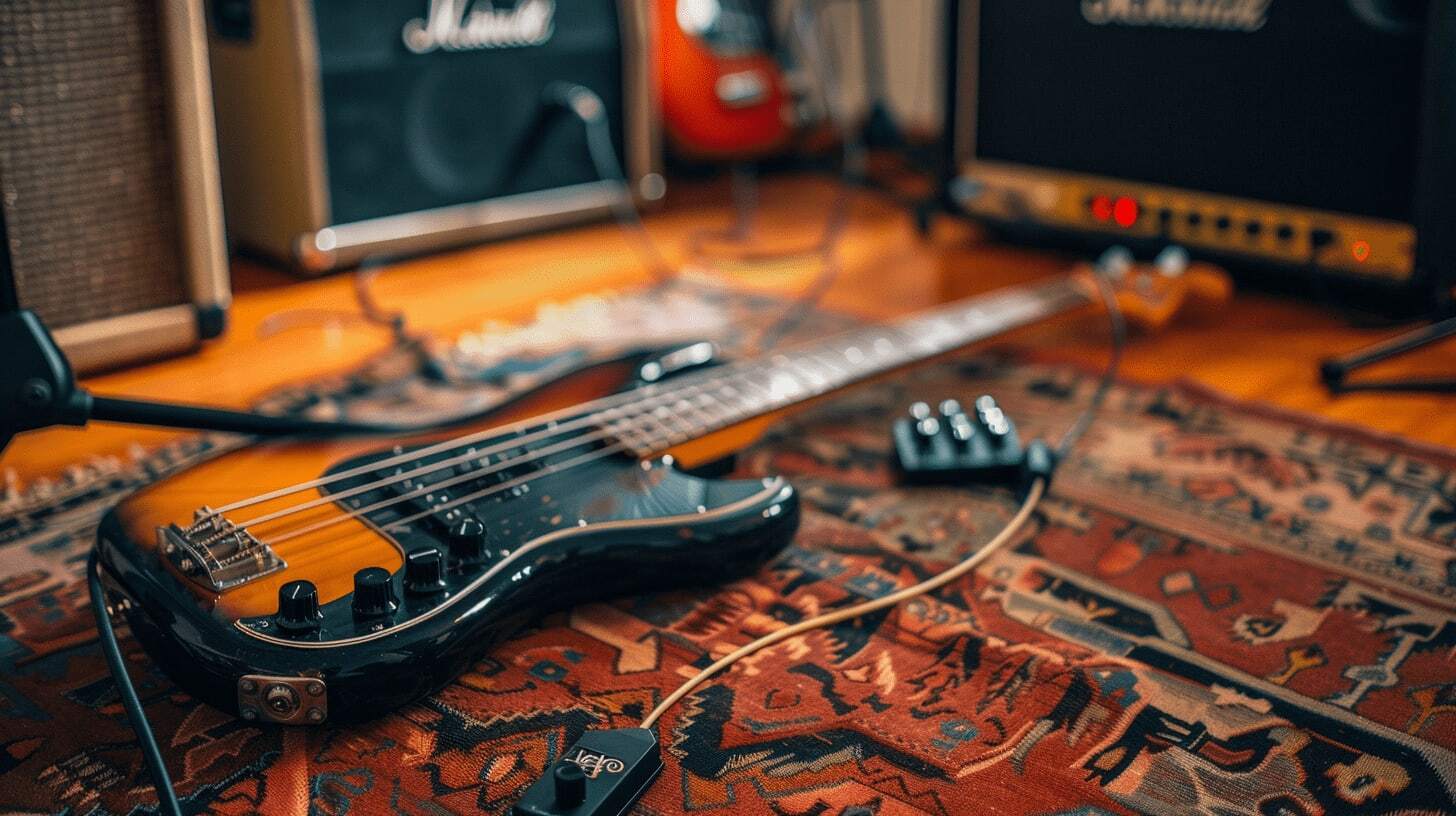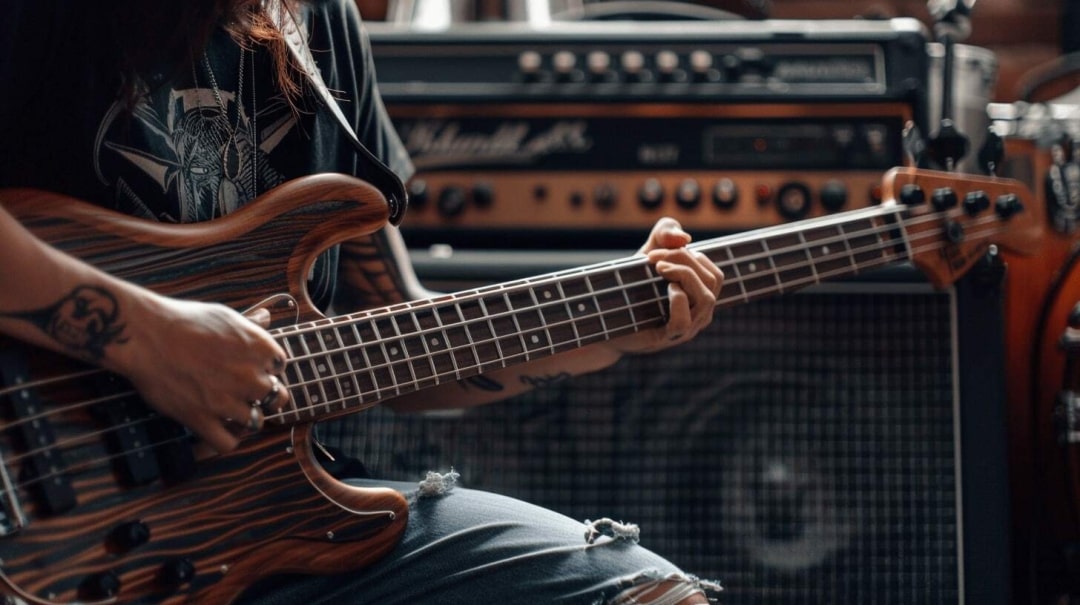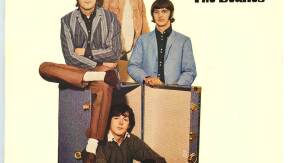Whether you’re grooving in a home studio or laying down the foundation on stage, the quest for that perfect low end is a journey every bassist knows well. Understanding the nuances of bass gear can make a significant difference in your sound. Here’s a guide to some of the essential tools and tips to help you achieve that rich, resonant bass tone that stands out, both in rehearsals and live performances.
The Essential Gear for Bassists

1. The Right Bass Guitar
Choosing the right bass guitar is paramount. While personal preference plays a big role, certain models have stood the test of time for their ability to deliver a robust low end.
- Fender Precision Bass (P-Bass): Known for its deep, punchy tone, the P-Bass is a staple in many genres. Its simplicity and solid construction make it a reliable choice for both studio and stage.
- Fender Jazz Bass: With its versatile tone control, the Jazz Bass offers a more articulate sound, allowing for both warm lows and clear highs. Ideal for players who need flexibility in their sound.
If you love the Fender style but want something more affordable without compromising on quality, consider checking out other brands such as: Squier Affinity, Marcus Miller Sire V series, Ibanez, Yamaha or Musicman.
2. Amplifiers and Cabinets
Your amplifier and cabinet setup are crucial in defining your low end. For a classic sound, here are two options:
- Ampeg SVT-CL: This all-tube amp head delivers a powerful, vintage sound that has defined rock and roll for decades. Pair it with an Ampeg 8x10” cabinet for a massive stage presence.
- Markbass Little Mark III: For those who prefer a lighter, more portable option, this amp head offers a clean, modern sound with plenty of punch. Its versatile EQ allows for fine-tuning your tone.
3. Pedals and Effects
Adding pedals to your setup can enhance your low end in creative ways.
- Electro-Harmonix Big Muff Pi: Known for its creamy, sustaining fuzz, this pedal can add a layer of grit to your sound, making your bass lines stand out.
- MXR M87 Bass Compressor: A good compressor can even out your dynamics, ensuring a consistent low end. The M87 offers precise control over your sound with its detailed metering.
Let's emphasize that pedals are not at all necessary and should only be used when seeking a particular sound.4. Strings
The type of strings you use can greatly affect your tone.- FLATWOUND STRINGS: These strings provide a smooth, mellow tone that’s perfect for jazz, blues, and Motown-style grooves. They’re also gentler on your fingers, making them a favorite among older players.
1. D'Addario Chromes
D'Addario Chromes are a great option for beginners looking for flatwound strings. They offer a smooth feel and a warm, mellow tone at an affordable price.
2. Ernie Ball Flatwound
Ernie Ball Flatwound strings provide a balanced tone and a comfortable playing experience. They are budget-friendly and ideal for beginners.
3. La Bella
- La Bella is known for producing flatwound strings that deliver a deep, smooth tone. These strings are perfect for achieving a vintage sound and are built to last.
4. Thomastik-Infeld
- Thomastik-Infeld offers flatwound strings that are crafted with great attention to detail. They provide a balanced, warm tone that many bass players love.
- ROUNDWOUND STRINGS: Offering a brighter, more aggressive tone, these strings are ideal for rock, funk, and slap bass techniques.
1. D'Addario XL Nickel Wound
D'Addario XL Nickel Wound strings offer a versatile sound and are known for their consistency. They are affordable and great for beginner bassists.
2. GHS Bass Boomers
GHS Bass Boomers are well-regarded for their punchy tone and longevity. They come at a budget-friendly price, making them a good choice for those starting out.
3. GHS
GHS roundwound strings are appreciated for their bright, articulate sound and smooth playability, making them suitable for a wide range of music styles.
4. Rotosound
- Rotosound is famous for its roundwound strings, which deliver a bright, cutting tone. They are a top choice among rock and metal bassists for their distinctive sound and feel.
Tips for Achieving a Great Low End

In the Home Studio
1. Direct Input (DI) Recording: Consider using a high-quality DI box to capture a clean, full-range signal from your bass. The Radial JDI is a popular choice among professionals.
You have the option to record a bass guitar in front of an amp to capture a rich and full-bodied sound that direct input (DI) often misses.
To it, put your bass in front of an amp, position a dynamic microphone like the Shure SM57 close to the amp's speaker cone, adjusting for desired tone. Connect the mic to your audio interface, set input levels, and monitor through headphones. Record test takes, adjust as needed, and proceed with recording your track. Et voilà!
2. EQ and Compression: Use EQ to carve out unwanted frequencies and highlight the sweet spots of your bass tone. Compression can help to even out your playing dynamics and add sustain.
On Stage
1. Soundcheck Routine: Always take the time to soundcheck thoroughly. Walk around the venue to understand how your bass sounds in different spots and communicate with the sound engineer to adjust as needed.
2. Monitor Mix: Ensure you have a good mix in your stage monitors or in-ear monitors (IEMs). Being able to hear yourself clearly helps you play more confidently and in time with the rest of the band.
3. Pedalboard Setup: Organize your pedals in a way that allows quick adjustments. Consider using a pedalboard with built-in power supplies to minimize cable clutter and ensure reliable performance.
Live Performance Tips from Legendary Bass Players

James Jamerson (The Funk Machine)
- Lock In with the Drummer: Jamerson, known for his work with Motown, emphasized the importance of locking in with the drummer. He believed that the tight relationship between bass and drums is the backbone of any great rhythm section.
- Keep It Simple: Jamerson often played with one finger, which he called "The Hook." This technique allowed him to focus on groove and feel rather than speed or complexity.
Jaco Pastorius (The Innovator)
- Experiment with Harmonics: Jaco was famous for his use of harmonics. By lightly touching the string at certain points, you can create bell-like tones that add a unique texture to your playing.
- Fretless Bass: Jaco popularized the fretless bass, which allows for smooth slides and a vocal-like quality. This can add a distinctive character to your sound.
Geddy Lee (The Technician)
- Active Electronics: Geddy Lee of Rush is known for using basses with active electronics, which allow for a greater range of tonal control. Consider using a bass with active pickups to shape your sound more precisely.
- Practice Consistently: Lee emphasizes the importance of regular practice to maintain technique and endurance, especially as you age.
Carol Kaye (The Session Queen)
- Use a Pick for Precision: Carol Kaye often used a pick to achieve a precise, punchy sound that cut through mixes. This technique can be especially useful in live settings where clarity is crucial.
- Understand the Music: Kaye stresses the importance of understanding the song and playing what's appropriate for the music, rather than overplaying.
More tips for beginners by Julien, one of our favorite bass player at Jamzone:
Achieving a great low end is both an art and a science. By carefully selecting your gear and honing your technique, you can create a powerful, resonant bass tone that supports your band and captivates your audience. Whether you’re recording in your home studio or playing live on stage, these tips and tools will help you define your sound and keep the groove going strong.
And remember: practice is your best friend when it comes to improving your skills. The best advice is to have fun! So choose your favorite tune from the Jamzone catalog and get the groove going!



